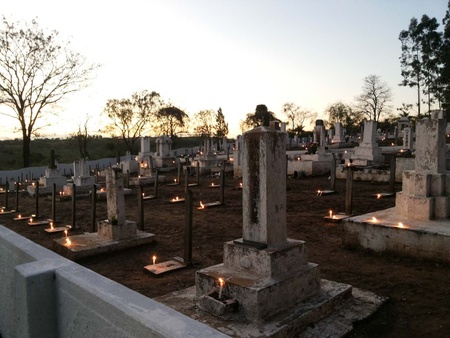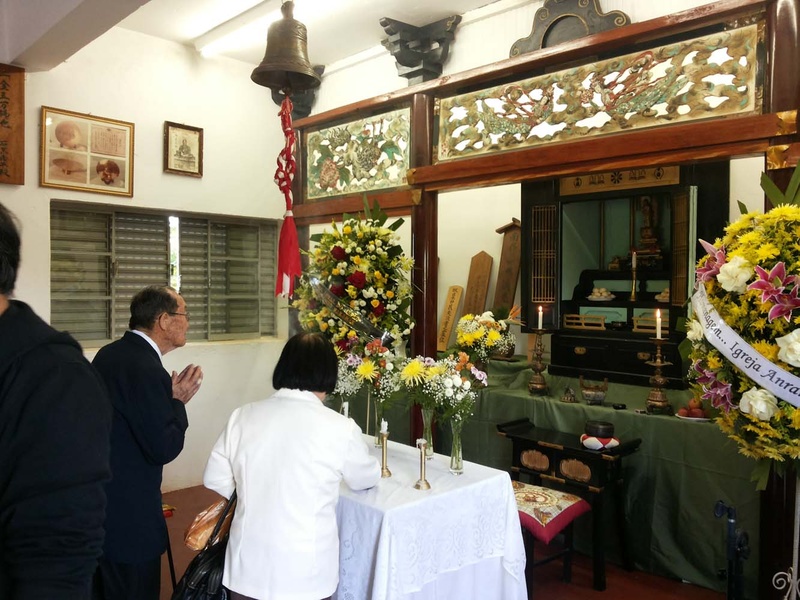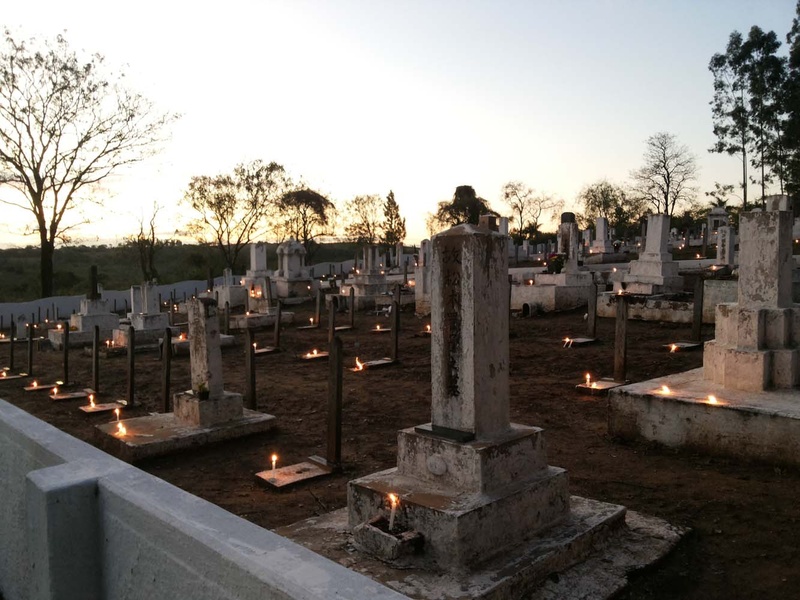My mother's family settled in the city that is now Álvares Machado, in the west of São Paulo. He bought land in the region and ended up giving part of the land to the construction of a school and the Japanese cemetery. Members of the Ogassawara family are buried at the site, which has hosted a traditional celebration for almost a century.
Almost a century-old tradition
The tradition of Shokonsai – which means “invitation to souls to mass” – arose from the celebration of the first mass, on July 15, 1920. Held every year on the second Sunday in July, it has an average audience of 2,500 people . This year's edition, the 97th in a row, was attended by three thousand people.
Among the preparations, between 40 and 50 people from the local Japanese-Brazilian community clean up on the Saturday of the weekend before the event and, the day before, carry out preparations. The stage part is a company that is responsible for the assembly.
Alberto Sano, 76 years old, a retired industrialist, has been part of the Nikkei community activities since 1980, helping to organize the event every year – according to him. Today he is president of ACEAM – Japanese-Brazilian Cultural, Sports and Agricultural Association of Álvares Machado, a position he has held for five years. Until then, he had been vice-president of the association.
The importance of this celebration is the fact that this is the only cemetery where only Japanese people and their descendants are buried, a historical landmark of Japanese immigration to Brazil. The preservation and conservation of the cemetery is the responsibility of ACEAM.
In addition to Japanese-Brazilians, President Sano says that non-descendants who participate are curious to observe the movement, see the presentations, etc.
Ceremonial and cultural programming
The program starts early, at 9am. First, the service – Buddhist and lasting one hour – is celebrated in the cemetery chapel. Then, it is time to bow and pray for peace in memory of the soldiers who died from all countries in the Second World War (1939-1945).
Afterwards, authorities – including the consul – participate in the official opening of the event and karaoke performances, typical and folk dances, taiko , are some of the highlights of the stage.
In the late afternoon, the bon odori is the last attraction before the candle ritual, which precedes the closing.
Curious fact
In these 97 years, it has never rained on Shokonsai day – only before or after. Furthermore, at 5pm, when the candles are lit in all the tombs, the wind stops and it is possible to contemplate the flames there.
Helena Maria de Almeida Cararo, 30 years old, community health worker and journalist, who moved to the city with her parents when she was 10 and where she got married, graduated and lives today, tells what she observed at the 2015 event – experience which became a report book for the Faculty of Journalism.
“The night before it rained a lot in the early hours of the morning, even hail fell, and I thought it would start raining. But when morning came the sun rose. It was windy all day, but when it was time to light the candles the wind stopped completely.” And he also says: “I believe that 97 years without rain in a day and with the wind not blowing out the candles only happens because of the faith of the Japanese”.
Preservation of the culture brought by pioneer immigrants
In the opinion of Alberto Sano, coordinator of the event, Japanese culture will be preserved as long as there are Japanese descendants and books about the history of immigrants in Brazil are published.
Shokonsai is the greatest example of an activity that maintains traditions and culture. But the city's Japanese-Brazilian association always holds karaoke contests, as well as serving yakisoba to raise funds and, consequently, stay in business.
“No one knows what will happen, because people from the current generation, 70-80 years old, are the ones doing these events. Soon all this will be over”, says the president of the Japanese-Brazilian Cultural, Sports and Agricultural Association of Álvares Machado. In Sano's opinion, this preservation of Japanese culture will depend on young people, who are few in the city, because they move to other cities when they start college and do not return to live there.
Helena Cararo realized the importance of this tradition and saw in the Course Conclusion Paper the opportunity to publicize it: “it was necessary to transmit it to future generations and also to people who do not know it in depth. Such a beautiful life story cannot be forgotten. The cemetery, such an important heritage, unique in Latin America, cannot be abandoned, this relic must be preserved.”
“I was enchanted by this story and these people, and I would like that when reading my book, people would also fall in love with such a fighting people, who suffered, but won!”, he concludes.
The Japanese cemetery
The Álvares Machado cemetery is the first and only Japanese-only cemetery in Latin America, listed by CONDEPHAAT (Council for the Defense of Historical, Archaeological, Artistic and Tourist Heritage of the State of São Paulo) in 1980. It was created around 1918 with the arrival of immigrants and the yellow fever epidemic in the region.
There are buried 784 Japanese people and direct descendants, and one Brazilian – Manoel, who was killed defending a Japanese family.

References:
Miyashita, Ryotaro. Fiftieth anniversary of the Japanese Colony of Álvares Machado .
Dear, Helena. Shokonsai: Life Celebrating Death .
© 2017 Tatiana Maebuchi







